If your response rates are below 20%, you have quite a bit of room for optimization, and you’re in the right place. If you’re above 30%, tell us how you did in comments 🙂
In this article, you will find examples of prospecting emails and best practices to achieve this.
To go further
Not yet measuring your response rates? Start by finding the right email prospecting tool!
Sommaire
The structure of a prospecting email
#1: Use a catchy topic
The first step to making a sale from a cold email is to make a strong first impression.
A catchy subject line creates that strong first impression, so that your email stands out among the 100 others your recipient has just received.
The key is to create clickable objects that avoid looking like spam.
Here are three tips for creating email subject lines that will make people want to click:
- Keep itshort: Keep in mind that longer topics will be cut off in many mailboxes, especially on mobile.
- Create interest: Creating a bit of curiosity can encourage users to click on an email they might otherwise ignore. For example, “Meeting at 10am?” is more likely to get a click. Don’t, however, use misleading subject lines such as “RE: Your order” (when they haven’t placed an order). These headlines may get a click, but they won’t close the deal.
- Personalise emails where possible: Ideally you want to use your contact’s name, but you can go further. For example, you can explain how you think the solution you are selling will optimise your target’s processes.
#2: Be brief and concise
According to a study by Boomerang, an email plugin for Gmail, emails of 50 to 100 words are most likely to get a response.
Bear in mind that you don’t know this person. They don’t want to listen to you wax poetic about the state of the world for 500 words.
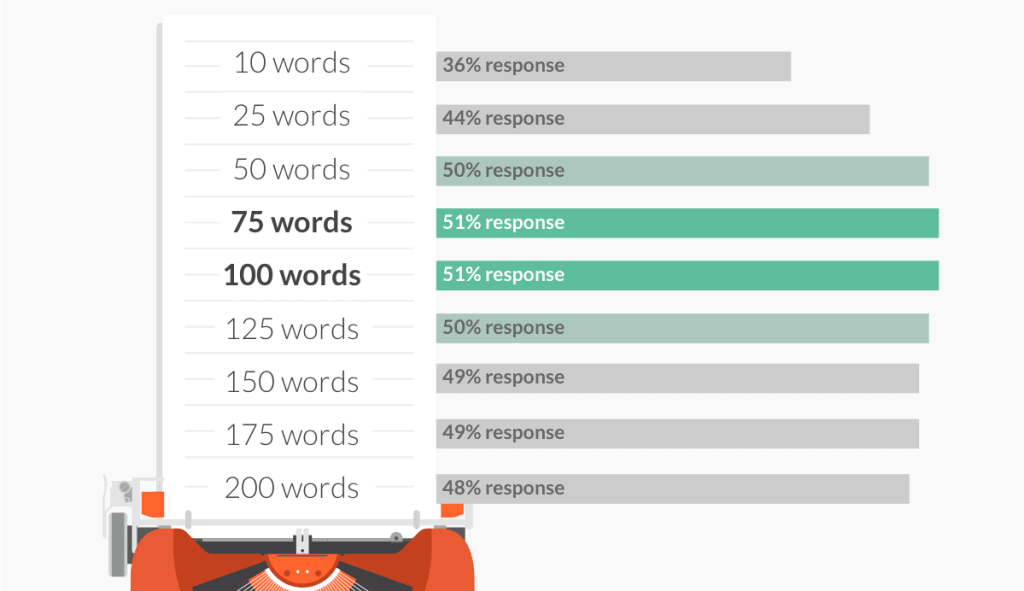
This approach may work when sending an email to an established contact, but not for a cold email.
#3: Be warm
Personalisation is the key to sales in the years to come.
And it’s everywhere: brands like Netflix and Amazon offer series and products based on your interests, dynamic ads on Facebook can even adjust the photos and text of ads based on the user’s actions.
But what about B2B? You don’t always know who you are contacting – or what their interests are.
Look at this example from Bryan Harris, the founder of a company called VideoFruit.
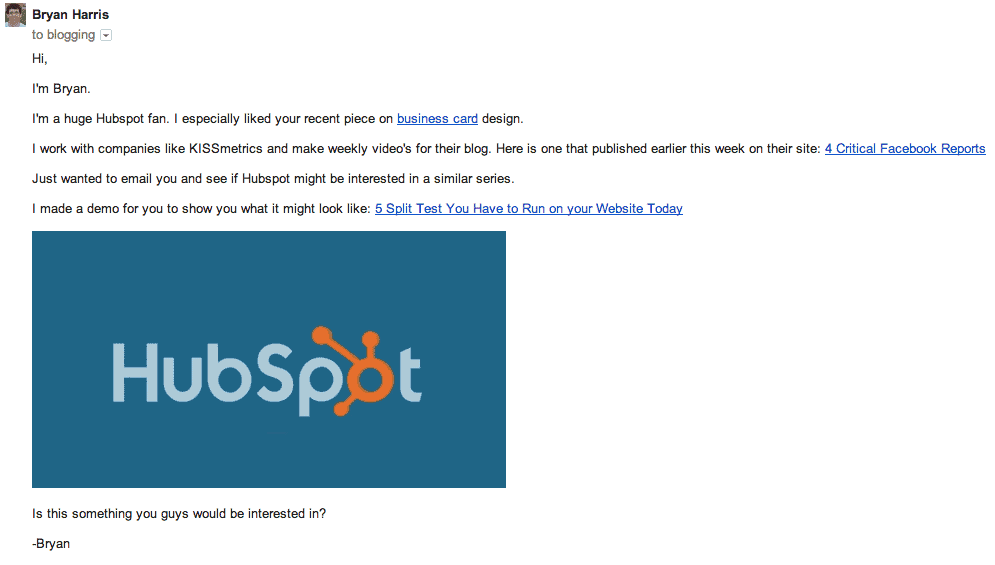
The email is short, he talks about how he likes the content they post and shares a video he created for them.
#4: No, don’t avoid the subject of COVID
Do you address the COVID-19 crisis when you send cold emails?
This is a difficult question to answer, as there may be different answers for different companies. If you are selling medical supplies to businesses, you will clearly be addressing the issue head on.
But what if you sell software or marketing tools?
The reality is that the virus impacts on the daily lives of almost everyone in the world – it is something we all have in common.
Taking advantage of this situation would be disgusting, so don’t be that person. But to avoid mentioning a subject that impacts on so many lives would be amazing.
Here are some tips to follow when addressing the COVID-19 crisis in your sales emails:
- Don’t test emoticons and GIFs now. Emoticons and GIFs can be a creative way to break the tension. But if you’re not comfortable using them, now is not the time to start trying. Your efforts could at best come to naught, or seem really insensitive.
- Do not assume that everyone has the same experience. Some people may be home alone, others may be trying to juggle children, and still others may be working outside and fear bringing the virus home.
- Do not use ready-made phrases. When we don’t know what to say, it may seem easier to use canned responses such as “In these uncertain times” or “X in the days of COVID”. The problem is that these phrases are overused and come across as insincere.
So what should be done?
Keep your email short, focus on how you can help their business in the current climate, and wish them well by ending your email with “I hope your team is holding up” or similar.
Tired of Excel files? A good CRM software allows you to take your prospecting to the next level. Discover our selection of the best free CRM software
Work on your offer
#1 Free help
Let’s start with the help approach. Below is a cold email template that we first discovered on the Single Grain website. You will then find the version of the template that you can use for your own needs.
Example
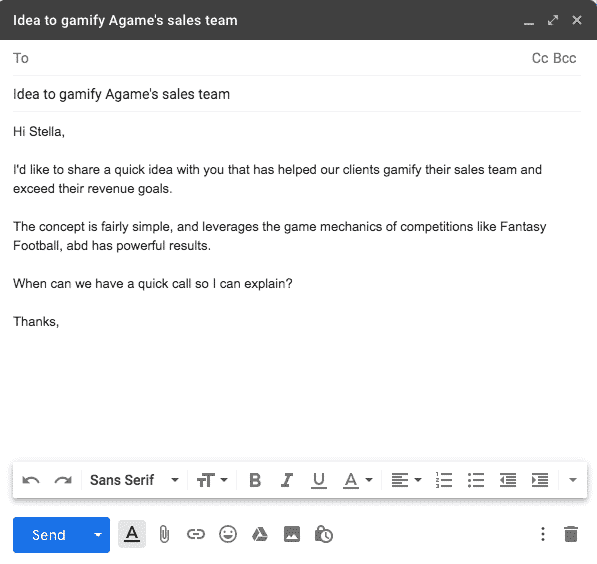
Prospecting email template
Objet : idée de {valeur que vous fournissez}
Hi {First name},
Can I share a small idea that has helped {Other clients} {Result you helped achieve}? The concept is quite simple and has powerful results.
When can we have a call so I can explain?
Thank you,
{Your name}
Why this model works
So why does this model work? Firstly, it is short and to the point. Secondly, it is written in a very respectful way. You simply ask them if you can help them.
And that’s another thing, you’re trying to help! For B2B cold email templates to be effective, they must offer added value.
Finally, templates end with a good call to action. Ending your emails with a question will improve your response rate. We humans are trained from birth to respond to things that are asked of us. You can use this to your advantage.
#2 Sharing the method
Asking a question is a great way to spark interest – but generic questions are not enough.
To be effective, your question must be specific and relevant to your lead. It should imply that your message will not require a huge time investment and promise a response.
Prospecting email template
Hello [First name],
Want to see how you can benefit instantly [from your product]?
I know you are busy working [on the end result to which your product/service contributes], and you may be working from home, so I’ll make this quick.
I am the manager of [your company], and I have some suggestions to help you generate immediate quick wins with [the area your manager works on]. Here they are:
[Tip 1]
[Tip 2]
Are you available for a quick 15 minute call next week so that I can give you some similar ideas and discuss them with you?
#3 Social proof & pitch
This example of a prospecting email is from Richard Mechaly, the co-founder of Provoke.Agency. His goal was to send an email to all his LinkedIn connections and see if there were any potential clients.
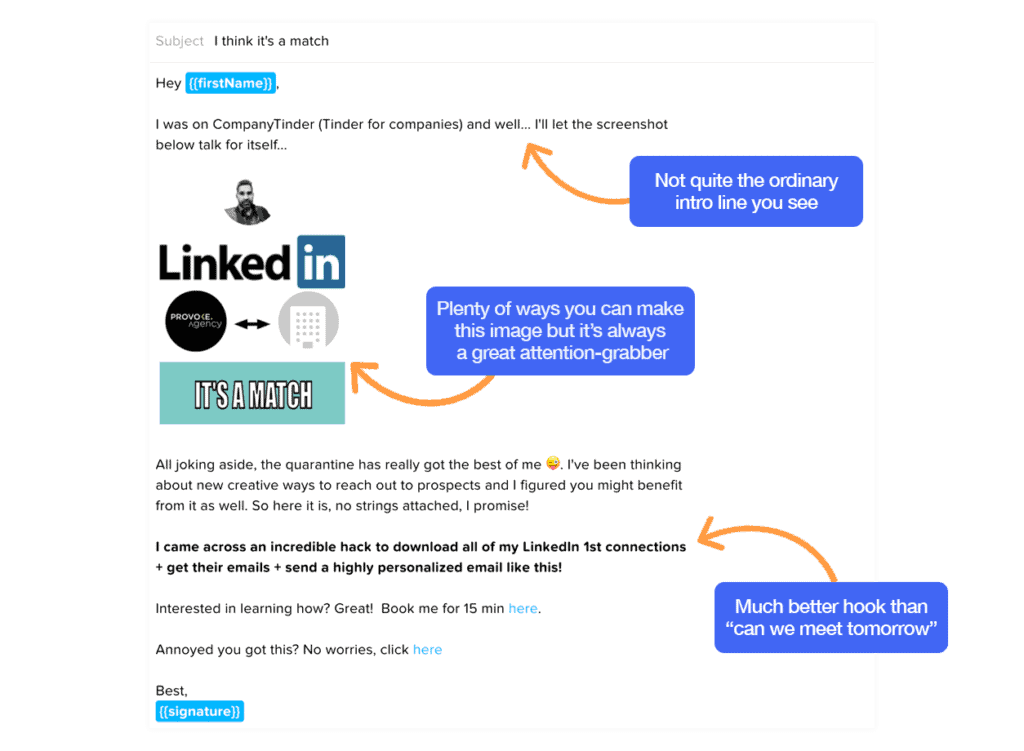
Key statistics
- Opening rate: 75%.
- Response rate: 18%.
- Key sales performance indicator: over 90 responses
Why did it work?
There is no better way to get someone’s attention than with a carefully chosen personalised image.
Selling is about two-way relationships. You want to impress people on both a professional and personal level. Customised images can help you do this, along with great copy.
The opening line is linked to the image, while the paragraph underneath helps it connect to something real, while positioning itself as a person looking to sell.
Finally, another brilliant thing is its call to action. A good hook and bait situation to get you to make an appointment.
Have a good reason to contact your prospects
It’s the reason you contact your prospect. If you put yourself in their shoes for a moment, it’s also part of the reason you think they should read your email. It’s not just about what you write in your email, it’s about creating campaigns that make sense to your prospects. We’ve provided three examples below:
#1 You have visited our website
This is a super simple but effectiveemailing technique.
If you have followed our advice in our article on how toidentify anonymous visitors to a B2B website, you can see who has visited your website. And even which company they work for in many cases.
This gives you the opportunity to send a super personalised email. You already know they are at least mildly interested in your brand, which means they are more likely to respond.
Prospecting email template
Hi [First name],
You recently visited [your website] and [took this action].
[Customised message based on the action – “I hope you found the ebook interesting” or “I hope the webinar answered all your questions”, etc. ]
If you would like more information on [content topic/product page visited], I recommend these additional resources:
[Additional resource 1]
[Additional resource 2]
Our company also offers [product/service], which could help you [to achieve this specific result].
Are you free to call us on [date and time] to discuss this? Like most people, we work from home, so I’m flexible – let me know if another time is better.
#2 The update email
A recent informative email can help break the ice and establish a rapport with a new contact. It can be something related to their current business, like this example from Chris Bibey, a content specialist:
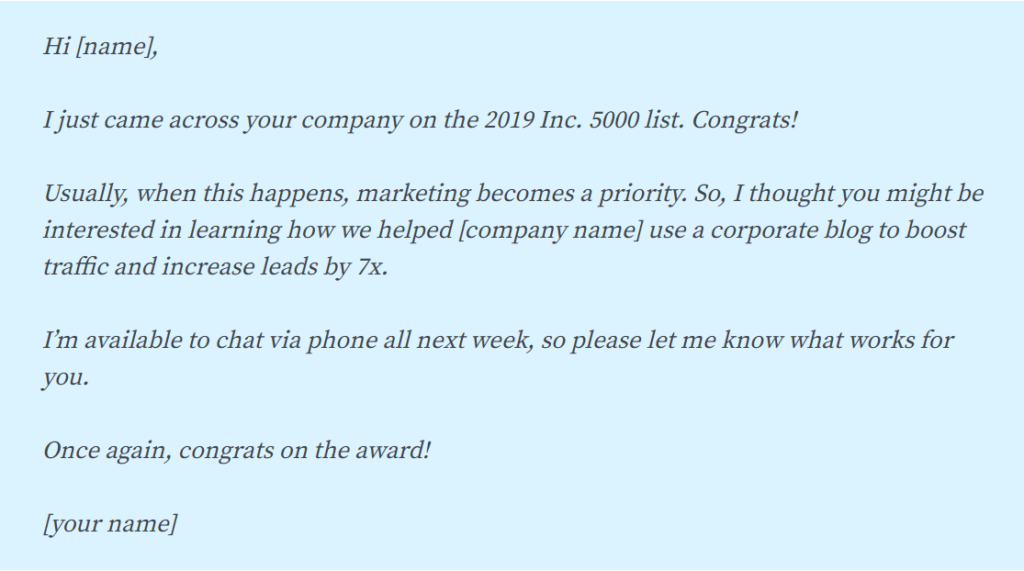
This format can also be adapted to send emails taking into account the current health crisis.
Try to keep the sales angle flexible. Remember that everyone deals with this issue a little differently, so you don’t want to make assumptions about their reaction.
Prospecting email template
Hi [First name],
I hope you and the team at [name of their company] are coping well with the coronavirus outbreak. Like most others, we are working from home and doing our best.
I noticed [insert link or mention site]. It is clear that your company has an impact on the [insert sector/market].
My name is [your name], I work at [your company] and we [one sentence]. We would like to help you [take advantage of your company’s offers] by [offer – free trial, demo, discount, etc.].
If you want to exchange or need anything, call me.
#3 Focus on transparency
If you have followed a particular logic in building your prospecting list, exploit that logic. If your logic is relevant, it will be an excellent justification.
For example, you have noticed a site on a particular keyword on google, and you have deduced that they are looking to build their authority on that topic.
Or you noticed they were using such and such software, and you just developed an integration that worked and allowed [competitor] to [quantified customer benefit].
The list is endless, be creative and transparent.
When most people hear the word “salesman”, what is the first word that comes to mind? Pushy? Annoying? Fake?
Many salespeople do not know how to sell without boring their potential customers. Boring people don’t achieve their sales goals, and companies with boring salespeople don’t weather crises well.
Prospecting email template
Hi [First name],
I just found you through your [site / social media profile].
I see you’re climbing the Google rankings [or addressing another recent success], and rightly so. I’m [an expert] in [your business] and I’ve realised that you could [benefit from your offer] more quickly by applying these two tips:
[Tip 1]
[Tip 2]
There is a third tip, but I don’t want to overwhelm you, especially with everything that’s going on right now. If the first two help you, let me know, and I can send you the third.
If not, I’ll rework my email templates 🙂
Take care of yourself.
If you want to optimise your email campaigns, you can find inspiration in the resources below:
- Discover our guide to email deliverability
- Get inspired by more than 40 powerful email subject lines for successful prospecting
- 8 facts about email marketing
- Learn how to personalise your prospecting emails without being scary
The competition is tough when it comes to cold email campaigns. However, there are many tips and methods to help you stand out and make a difference. We hope these examples of cold emails will help you get noticed by your potential customers. Feel free to share your successful emails in the comments!






